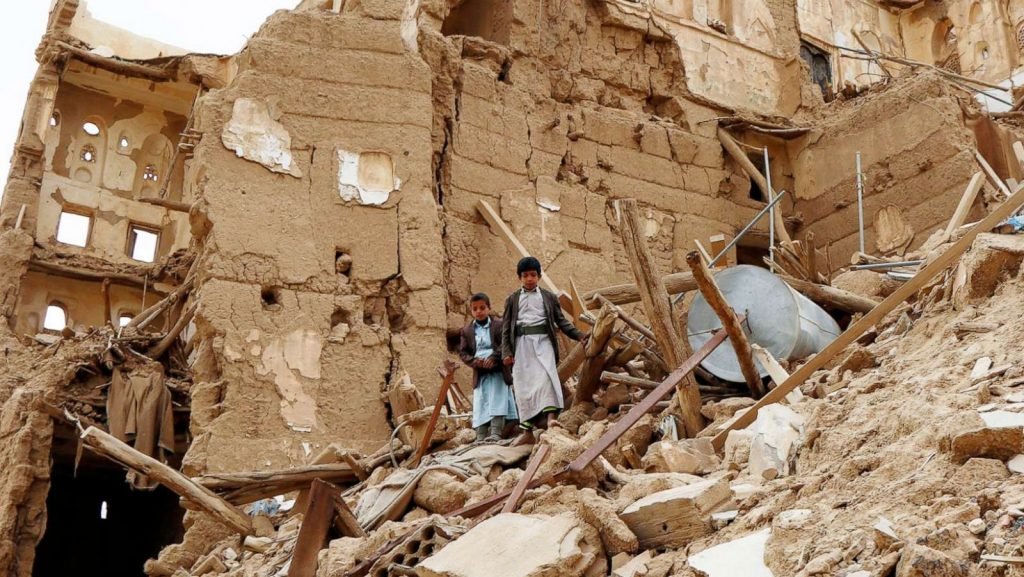Ten years ago Yemenis rose up against corruption, economic hardship and demanded a more accountable and inclusive government. The country fractured politically and is now stuck in a war that has created what the United Nations describes as the world’s biggest humanitarian crisis.
Following is a timeline of Yemen’s slide into conflict.
After Yemen’s Huthi rebels brought the war to the UAE in a drone attack, the Saudi-led coalition struck.
The war pits the Iran-supported insurgents against Yemen government forces backed by Riyadh and Abu Dhabi.
The conflict has left about 377,000 dead, according to the UN, either through fighting or as victims of famine, sickness, and a lack of clean drinking water.
2014: Huthis take capital
The Huthi rebels from the Zaidi Shiite minority in northern Yemen seized the capital Sanaa in September 2014.
Backed by Shiite heavyweight Iran, they ally themselves with military units loyal to ex-president Ali Abdullah Saleh, who had been forced to step down after a 2011 uprising.
They also take swathes of territory including the vital Red Sea port of Hodeida.
President Abedrabbo Mansour Hadi flees in February 2015
President Abedrabbo Mansour Hadi flees in February 2015 to the second city Aden on Yemen’s south coast.
2015: Saudis step in
A coalition led by Iran’s bitter enemy Saudi Arabia that includes the United Arab Emirates entered the conflict in March 2015 with airstrikes on the rebels.
Washington says it is contributing logistics and intelligence.
As the rebels advance on Aden, Hadi flees to Saudi Arabia.
The coalition’s intervention helps pro-government forces secure Aden, and in October they announce having retaken control of the Bab al-Mandab strait, one of the world’s most strategic waterways.
2018: Battle for key port
In June 2018, government fighters, backed by Saudi and Emirati ground forces, launch an offensive to retake Hodeida, a key entry point for humanitarian aid.
UN-brokered talks between the warring parties opened in December, with a ceasefire declared in Hodeida.
But in mid-January 2021, violent clashes break out between rebels and pro-government soldiers in the south of the city.
Separatists flex muscles
The anti-Huthi camp is divided.
South Yemen was an independent state before unifying with the north in 1990, and southern separatists frequently clash with unionists loyal to Hadi’s government.
The separatists occupy the presidential palace in Aden in January 2018, before Saudi and Emirati forces intervene.
In August 2019, separatists in Aden from the UAE-trained Security Belt force clashed again with unionist troops.
Riyadh has since negotiated a power-sharing agreement and the formation of a new government.
2019: Saudi oil hint
The rebels escalate their attacks on Saudi Arabia, using drones and missiles.
A major hit on September 14, 2019, on Abqaiq processing plant and Khurais oilfield halves the kingdom’s crude output.
Riyadh and Washington accuse Iran of being behind the attack, which it denies.
2021: New escalation
On February 8, 2021, the Huthis resume an offensive to seize oil-rich Marib province, the government’s last northern stronghold.
The upsurge comes shortly after Washington ends its support for coalition military operations and removes the Huthis from a “terrorist” blacklist.
Fighting intensifies over the following months.
2022: Rebels turn on UAE
On January 3, 2022, the rebels seize an Emirati-flagged vessel in the Red Sea, which the coalition says is carrying medical supplies.
The rebels say it was “a military cargo ship with military equipment”.
A week later, pro-government forces with UAE backing claim to have retaken the northern oil province of Shabwa.
Suspected drones on January 17 set off an explosion in an oil facility in Abu Dhabi, killing two Indians and a Pakistani worker, the first deaths inside the UAE from the Yemen conflict.
The Huthis warn civilians and foreign firms in the UAE to avoid “vital installations”.
The United States vows to hold the rebels accountable for the “terrorist attack”.







